MARKETING FESTIVAL 2017:
THE DIGITAL SIDE OF PRAGUE (PART 1)
Journal / Life at Mozaik / 14.12.17
Another Marketing Festival fulfilled its mission on November: to update us all about the trends and best practices of the sector in a melting pot of ideas, cultures and people. This year, the festival returned to the capital of Czech Republic, Prague, at the Prague Congress Center. Mozaik’s Online Marketing Team was present, and we are now ready to share our precious notes and experiences from this wonderful trip in one of the most beautiful capitals of Europe!

During the first day, part of the team attended 2 advanced workshops where acknowledged experts provided us with practical advice on PPC and SEO. After 2 cups of strong coffee, we headed to VSEM (Economics & Management College), opened our laptops and minds to fill in with new Knowledge.
The Power of Power Query:
Daniel Zrust works as a Senior Digital Marketing Specialist for Avast and is responsible for the performance and optimization of over 10.000 of campaigns during his daily routine. Daniel showed us how to use Power Query, as well as to create, optimize and maintain large scale ppc accounts. It was a revelation! During the workshop, we learned how to create a reusable template campaign builder and save tons of hours in the future. Power Query is a free Microsoft Excel tool. It’s main purpose is for business intelligence but we understood that it can be a very powerful PPC automation tool too!
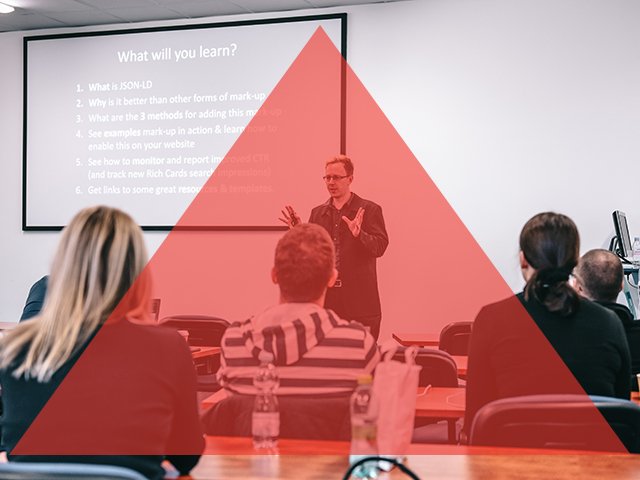
Supercharge Organic CTR:
Phil Pearce is a well-known expert in Analytics, SEO and technical optimization. Phil explained us about the entity wars between Google and Facebook, how these industry giants manipulate and keep data. Then he showed us how microdata and RDFa have died and why JSON-LD structured data is the only solution for better SEO Rankings. The workshop got too technical with examples of schema markups and implementation tactics. Phil is known for his passion during public speaking and gave us huge amount of info, tips and tricks to get more organic traffic with the same amount of impressions by using structured data.
Here are 2 treats for you: Get Phil’s cheat sheet: JSON-LD SEO Cheatsheet and here an intro to JSON-LD.
Rand Fishkin: The Invisible Giant that Mucks Up Our Marketing
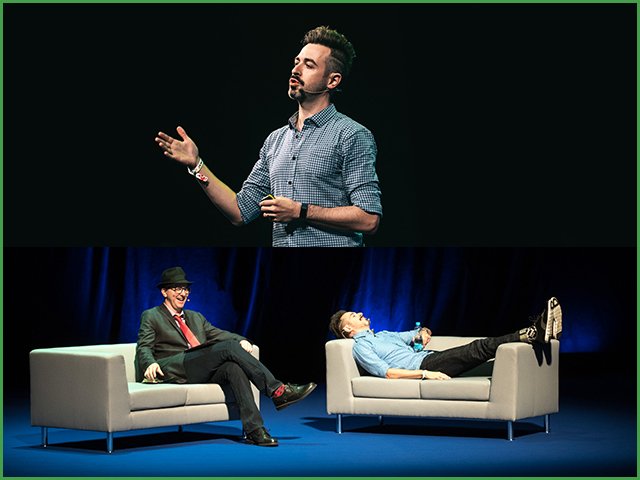
Rand Fishkin was the first presenter at the Marketing Festival. Well-known for his energy on stage, he presented us with some of the most common cultural misconceptions in the realm of digital marketing.
The first misconception as he calls it is the fact that “investments must be measurable”. He presented the most significant marketing channels from those easiest to those hardest to measure and suggested to invest a percentage of the overall marketing budget to those hard-to-measure channels and use segments to monitor brand and traffic lifts to assess this investment.
The second misconception he said is “that channels must be ROI – Positive”. He stressed, we should focus more on long-term potential rather than immediate results, since some channels need some more time and effort to generate profits.
The third important misconception according to Fishkin is the fact that “search investments should be either SEO or PPC”. As he demonstrated live on stage, currently there are 9 click-earning, non-traditional SERP features:
- Knowledge panels
- Related questions
- Local packs
- Images
- Sitelinks
- Featured snippets
- Top stories
- Videos
- Tweets.
His suggestion is that we should take advantage of all the above opportunities for search visibility and incorporate various publishers in our search strategy including amazon, Facebook, reddit, YouTube and Bing.
Finally, he mentioned that the top SEO priority for 2018 is to try and satisfy the searcher’s query better than anyone else on page 1 and ended the presentation by giving us a piece of advice:
“Next time you are making a strategic or tactical marketing strategy, ask yourself How (not if) is cultural conditioning biasing me?”.
Kim Goodwin: Right Research, Right Value
“Do you want to know why people do what they do? Ask them! Not via survey but in person”.
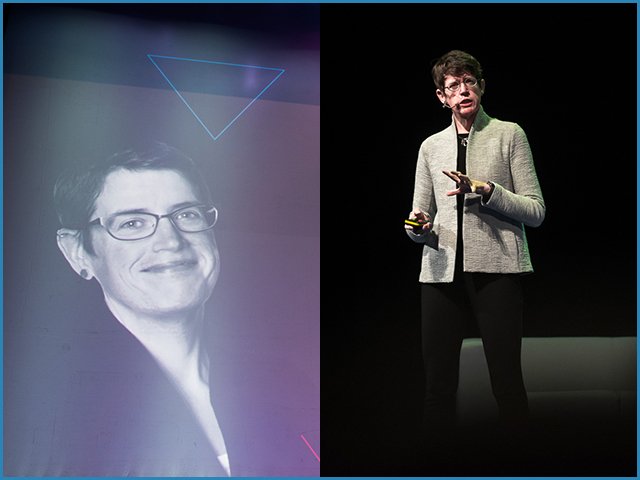
Kim Goodwin, author of the best-seller “Designing for the Digital Age”, has 22 years of experience in the field of interaction design and user research with leading teams. She now works as VP of Product & User Experience at PatientsLikeMe.
Below some notes from her talk on effective research:
- Surveys are good for facts, but they are unusable in predicting behavior.
The surveys are based on the ability of people answering the questions, which can often be misleading. Indeed, there are other circumstances that affect decisions such as the self-image and invisible habits.
- Don’t outsource your research. It is like outsourcing your vacation.
- The best practice is to proceed with direct observation and real conversation. You can conduct interviews with asking for specific stories, for example. According to her, 6-20 interviews are enough to see patterns and to determine why they do what they do.
She also concentrated on UX of a website. The core message was about the potential value propositions. Some key points:
- Try to find customer’s experience goals and define the values to help them to improve the journey.
- Identify opportunities to “reduce pain” in the customer experience. For example, in airlines, the customer’s needs are to know about any Visa needed, weather, car rentals, meals, security etc. Airlines need to cover these and provide help.
- You need to influence decisions. “A person like me” is contextual. Customers like to share their needs with like-minded persons.
Joe Wade: We Must Scare Our Clients
“If your target audience loves it, it doesn’t matter if most people hate it”
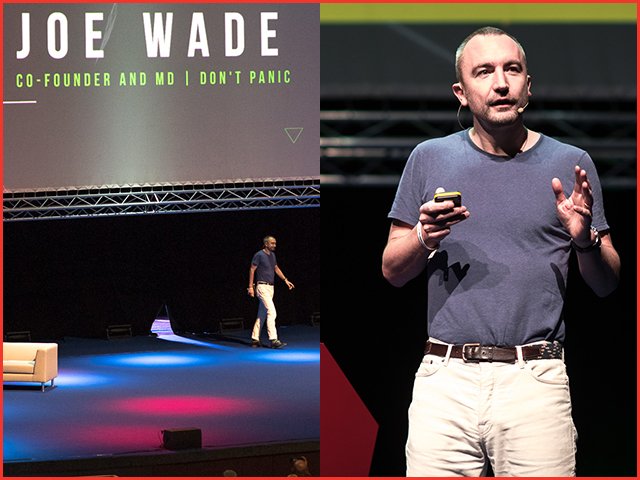
Another star of this Marketing Festival was Joe Wade, Co-Founder at the creative agency “Don’t Panic”, responsible for some of the best viral advertising campaigns. He specializes on giving ideas about how to make an ad go viral. During his speech he showed us many good & bad examples of ads like spots dedicated to child protection (SaveTheChildren) , the Nivea and Pepsi advertising fail and of course the awarded spot of an energy drink with a mascot (puppymonkeybaby).
While demonstrating these examples on stage, he recommended to marketers to act this way:
- Drag clients out of their comfort zone and into creativity and urge them to take risks.
- Don’t worry if the broad audience doesn’t like our ad, but worry about our target audience.
- Affect the emotional side of the viewer. In ads, hearts persuade minds!
- Make adverts more artistic again with more storytelling, as stories are the oldest & most innate viral content.
- Sharing is the most important metric because you can avoid additional promotion and budget. Unfortunately, 60% of branded content on Facebook isn’t viewed or engaged with.
- Advertisers should think first online and then other mediums like TV. Not the other way round.
Last but not least, he dealt with another debated topic, which is blocking advertising on the Internet. He explained that marketers tend to focus on how to create more ads for additional channels, resulting in no more clicks or ad views, but more installing blocking systems.
Avinash Kaushik: AI and Machine Learning – Implications on Business, Marketing & Analytics
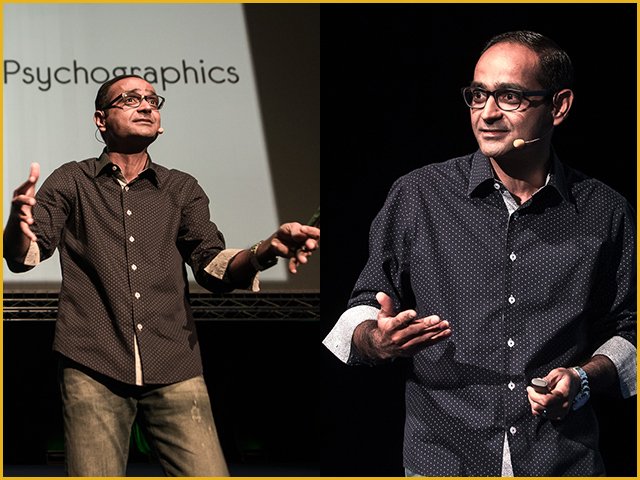
Avinash was the super-star of the festival and as always, a mindblower for the upcoming digital era. As he mentioned, we must target users based on their intent to do or buy something. So, every media channel has a clear purpose but when it comes to spending money, we should be very careful and reorder their priority based on users’ intent.
To outline that intent, the best way is implementing what Avinash spends most of his time doing and it is called AI (Artificial Intelligence). Deep learning is a specific machine learning technique which powers the most exciting applications of Artificial Intelligence and as a result we are able not only to solve problems that we are currently facing but also solve problems that we can’t even imagine being able to solve! And when it comes to advertising we might don’t know who our potential clients are but still we will be able to put an interesting and effective content in front of them, at the right time.
How all these could be translated into actionable information in our online digital world? Avinash proposed to allocate our time the way it is shown in the “Tomorrow” column, in the table below:
| Yesterday | Tomorrow | |
| Data Collection | 50% | 10% |
| Data Reporting | 40% | 10% |
| Data Analysis | 10% | 30% |
| Taking Action | 0% | 50% |
So, as according to him, the goals for our companies for 2018 should be:
- 5% of our Workforce must be trained on Machine Learning
- 25% of our core Business functions must be powered by Machine Learning
- 50% of our Digital Marketing actions must be powered by Machine Learning.
This way, we will be able to do something in 5 months that otherwise would take us 5 years to accomplish!
Stay tuned for Part 2!
